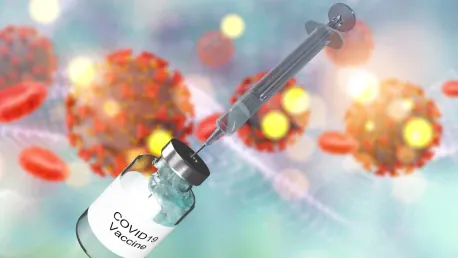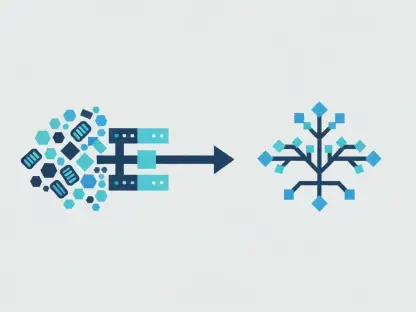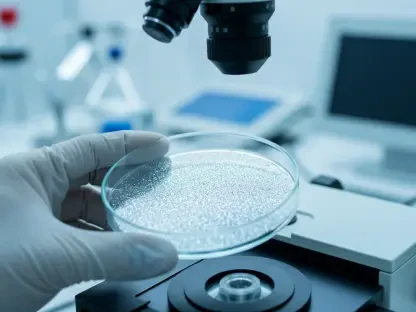The Immunomodulators Market is on the cusp of exponential growth, with forecasts predicting an increase from roughly USD 217.7 billion in 2023 to an estimated USD 388.7 billion by 2032. This significant rise, characterized by an impressive compound annual growth rate (CAGR) of 6.7%, is largely driven by the escalating prevalence of autoimmune diseases, various cancers, and chronic infections. Immunomodulators, which can either stimulate (immunostimulants) or suppress (immunosuppressants) immune system activities, are being increasingly recognized as essential components in modern medical treatments, addressing a spectrum of health conditions.
Growth Factors Driving the Market
The expansion of the immunomodulators market can be traced to several pivotal drivers. Chief among these is the alarming surge in autoimmune and inflammatory diseases worldwide, necessitating the development of more advanced and effective treatments. As the incidence of these conditions continues to climb, so does the demand for immunomodulatory therapies that can offer relief and improve patient outcomes. Simultaneously, remarkable strides in biotechnology and pharmaceutical research have further fueled market growth, leading to the creation of sophisticated therapies that are increasingly relied upon by medical professionals.
Heightened awareness regarding the benefits of immunomodulatory therapies has also played a crucial role in the market’s expansion. Both patients and healthcare providers are becoming more informed about the efficacy and potential of these treatments, driving higher adoption rates. Additionally, the increase in healthcare expenditures emphasizes the urgent need for effective treatments, further solidifying the market’s upward momentum. The ripple effects of COVID-19, including long-term respiratory issues and other health complications, have also significantly boosted the demand for immunomodulators, underscoring their role in managing current and future health crises.
Product Segmentation: Immunosuppressants and Immunostimulants
The immunomodulators market bifurcates primarily into two distinct product types: immunosuppressants and immunostimulants. In 2023, immunosuppressants dominated the market, commanding a substantial revenue share of USD 136.5 billion. This trend mirrors the increasing global rate of organ transplants, where immunosuppressants are vital for preventing organ rejection and ensuring the long-term success of the transplant. These agents have become indispensable in transplant medicine, offering critical support to patients undergoing complex surgical procedures.
Conversely, immunostimulants are carving out a growing niche for themselves due to their role in enhancing the immune system’s ability to combat infections and diseases. Their value is particularly pronounced in oncology and infectious disease treatments, where bolstering the immune response can lead to significantly improved patient outcomes. The medical community’s growing interest in immunostimulants indicates that these agents will substantially contribute to the overall market growth in the coming years. Their increasing application in various therapeutic areas is expected to fuel further innovation and development in this segment.
Application Landscape: Oncology Leading the Way
Examining the immunomodulators market through the lens of application reveals four primary segments: oncology, autoimmune diseases, infectious diseases, and other applications. In 2023, the oncology segment led the way, with a valuation of USD 85.4 billion. The use of immunomodulators in cancer treatment is on the rise, enabling the immune system to more effectively target and eradicate malignant cells. This approach has revolutionized cancer therapy, providing new avenues for treatment and offering hope to patients facing previously insurmountable diagnoses.
The adoption of immune checkpoint inhibitors, cytokines, and cancer vaccines has become a cornerstone in the battle against tumors, reshaping contemporary oncology practices. These innovative therapies have shown considerable promise in clinical trials and are increasingly being incorporated into standard cancer treatment protocols. As a result, the success and ongoing development of immunomodulators in oncology are expected to drive substantial market growth in this segment, reflecting the critical role these therapies play in cancer care.
Geographic Trends: North America at the Forefront
North America is poised to dominate the global immunomodulators market, with projections suggesting a valuation of USD 178.3 billion by 2032. The United States alone generated USD 91.2 billion in 2023, driven predominantly by the high incidence of chronic diseases. The growing number of individuals dealing with multiple chronic conditions has intensified the regional demand for immunomodulatory treatments, highlighting the critical role these therapies play in managing complex health issues.
The robust healthcare infrastructure in North America, combined with substantial investments in research and development, supports the market’s considerable growth. Favorable regulatory frameworks and the presence of major pharmaceutical companies in the region further bolster the market’s expansion. These factors collectively ensure that North America will maintain its leading position in the global immunomodulators market, continuing to spearhead advancements and innovations in this critical healthcare sector.
Market Players and Competitive Landscape
Prominent market contributors include industry giants such as AbbVie Inc., Amgen Inc., AstraZeneca PLC, Biogen Inc., Bristol-Myers Squibb Company, Eli Lilly and Company, F. Hoffmann-La Roche AG, Gilead Sciences, Inc., Johnson & Johnson, Merck & Co., Inc., Novartis AG, Pfizer Inc., Sanofi, Teva Pharmaceutical Industries Limited, and UCB S.A. These companies are at the forefront of innovation, continuously developing new and improved immunomodulatory therapies to address the evolving needs of the healthcare sector.
Strategic partnerships, mergers, and acquisitions are common strategies within this competitive landscape, as companies seek to expand their product portfolios and enhance their market reach. By collaborating and consolidating their strengths, these market players are better positioned to drive the growth and evolution of the immunomodulators market. Their ongoing efforts to innovate and improve therapeutic options are vital to the continued success and expansion of this dynamic sector.
Challenges and Pitfalls
The Immunomodulators Market is poised for exponential growth, with forecasts predicting an increase from about USD 217.7 billion in 2023 to an estimated USD 388.7 billion by 2032. This notable surge reflects an impressive compound annual growth rate (CAGR) of 6.7%. The market’s expansion is primarily fueled by the rising prevalence of autoimmune diseases, various forms of cancer, and chronic infections. Immunomodulators, which include both immunostimulants (that boost immune system activity) and immunosuppressants (that suppress immune responses), are increasingly being recognized as vital in contemporary medical treatments. These agents play a crucial role in managing and treating a wide array of health conditions, offering therapeutic benefits that address the needs of patients with diverse medical challenges. The growing acceptance and utilization of immunomodulators in healthcare underscore their importance in improving patient outcomes and advancing medical science.









